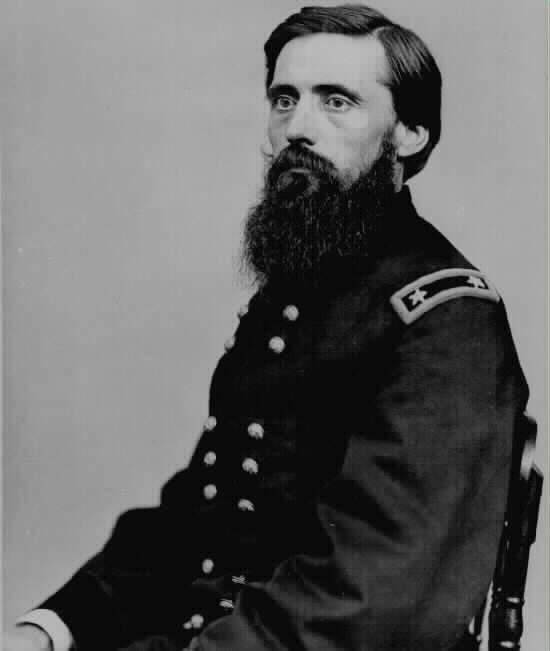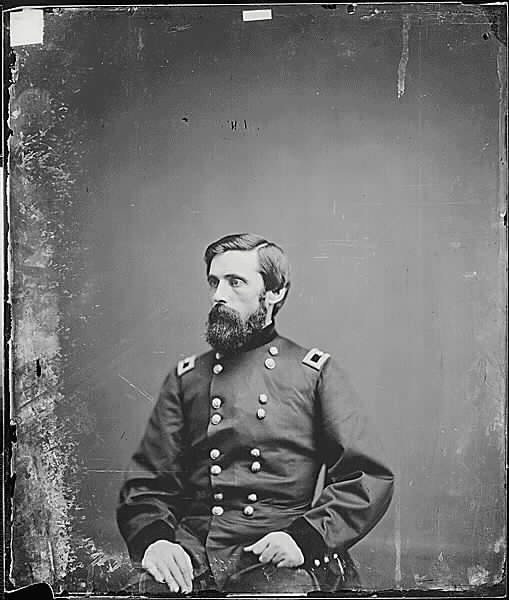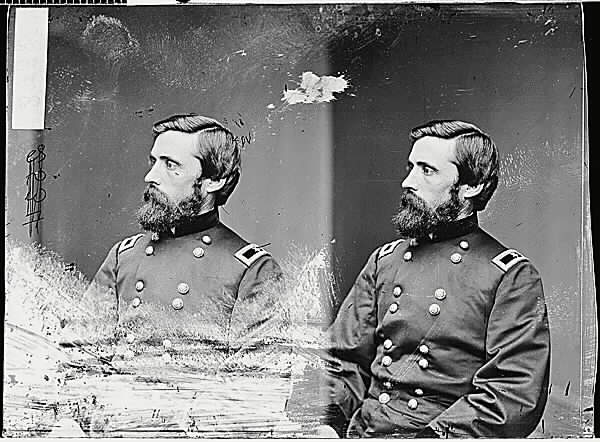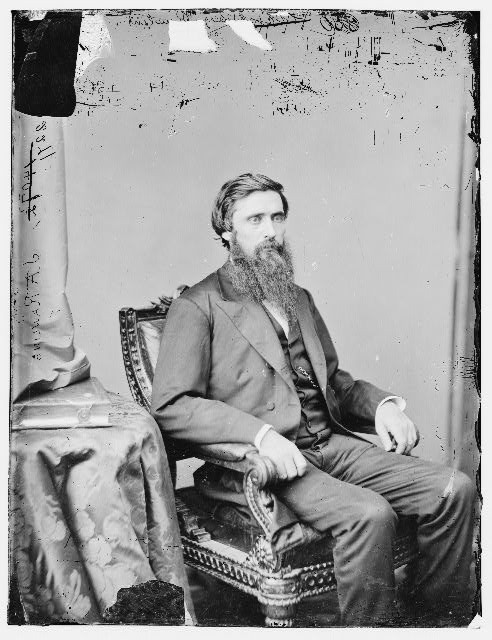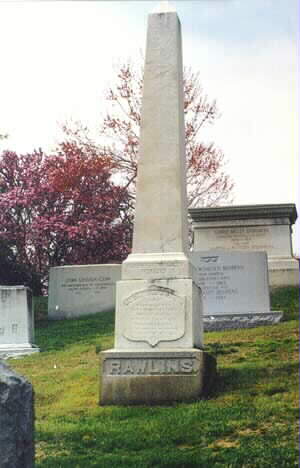Born January 13, 1831 at Gelena, Illinois, his family originated in Virginia and came to Illinois by way of Kentucky. When his father went to California for the gold rush there in 1849, he maintained the family, at the same time obtaining a law education and admission to the State Bar in 1854. He served as city attorney in Galena in 1857 and like most of his midwestern contemporaries, he was a Douglas Democrat in 1860. With the outbreak of the Civil War, he was a successful politician with a passion for military life, and he teamed with an unassuming ex-Captain of the Army who clerked in his brother’s leather store, Ulysses S. Grant. Within eight years Grant would be President and Rawlins his Secretary of War.
Grant asked him to become his aide-de-camp, and on August 30, 1861, he was commissioned a Captain and Assistant Adjutant General on the staff of Grant, who was then a Brigadier General. From that time until the end of his brief life, he was Grant’s alter ego, discharging with objectivity the duties and responsibilities of intimate friend, military and political adviser, editor, and, on perhaps a few occasions, apostle of sobriety, although it would seem that he played this role far less than is popularly believed. In any event, Grant referred to him a the most nearly indispensable man he had around him.
As Grant attained fame and promotion, he secured for him advances in grade. He was made Major on May 14, 1862; Lieutenant Colonel, November 1, 1862; Brigadier General of Volunteers, August 11, 1863; Brigadier General, U.S. Army, Chief of Staff, with rank from March 3, 1865, the last appointment of Brigadier General in the Regular Army made during the Civil War. He was breveted Major General in both the Volunteer Service and the Regular Service.
His first wife had died of tuberculosis in 1861, and it was determined that he was suffering from the disease as well. The recommended travel on the high plains over the proposed route of the Union Pacific Railroad failed to improve his health, and when Grant made him Secretary of War in March 1869, he had only five months to live.
He died in Washington on September 6, 1869 and was originally buried in a friend’s vault in Congressional Cemetery in Washington. He was subsequently moved to Section 2 of Arlington National Cemetery.
RAWLINS, JOHN A
MAJOR GEN US ARMY
- VETERAN SERVICE DATES: Unknown
- DATE OF DEATH: 09/06/1869
- DATE OF INTERMENT: Unknown
- BURIED AT: SECTION 2 SITE LOT 1007
- ARLINGTON NATIONAL CEMETERY
Michael Robert Patterson was born in Arlington and is the son of a former officer of the US Army. So it was no wonder that sooner or later his interests drew him to American history and especially to American military history. Many of his articles can be found on renowned portals like the New York Times, Washingtonpost or Wikipedia.
Reviewed by: Michael Howard

